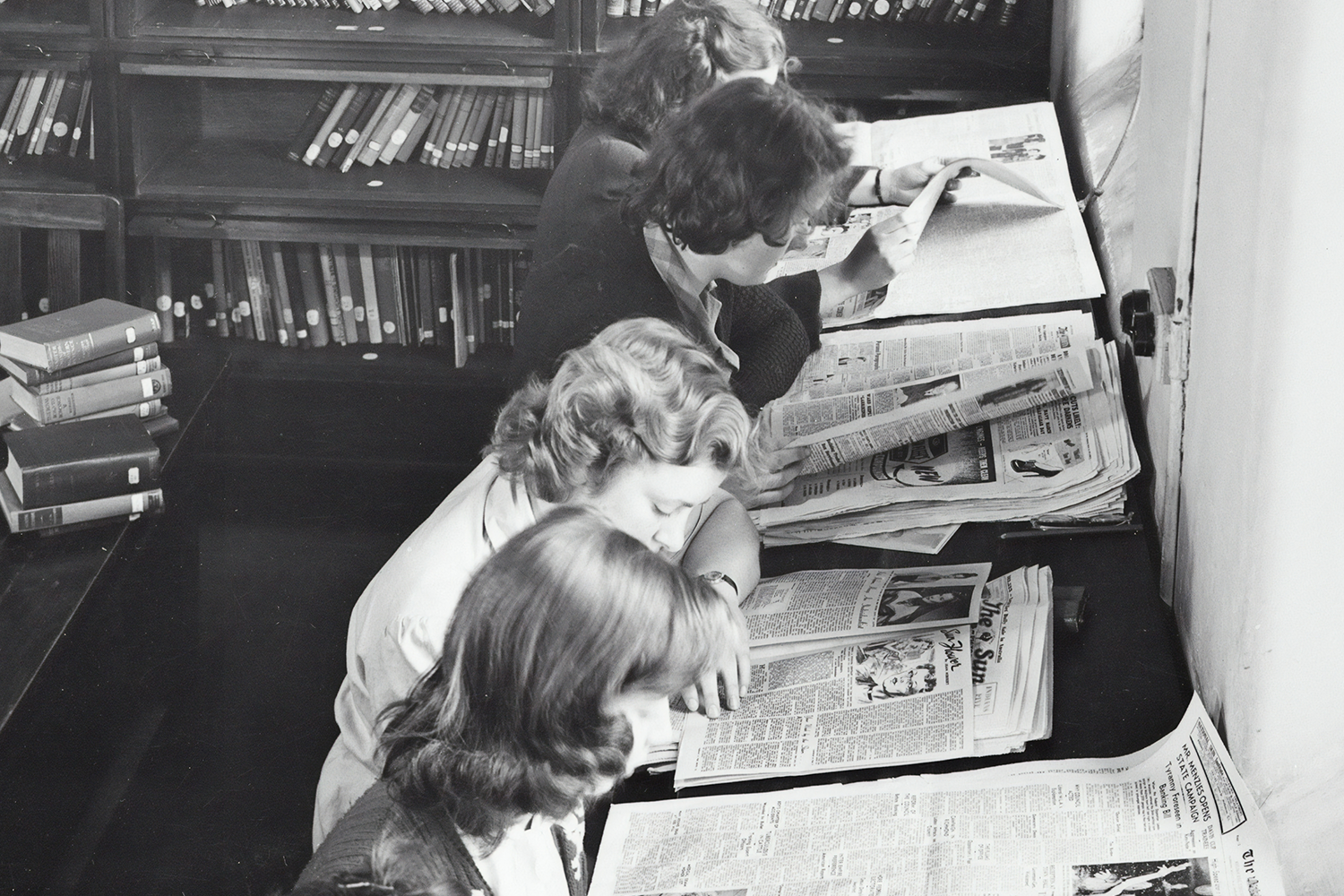Stick With Old Media: Not Cool But it Works
In the age of social media, Holly Minch dares to defy the Twitter evangelists and make the case for the power of traditional print and radio.

Three reasons why writing press releases and pitching reporters are still worth it.
In the age of social electronic media, media expert Holly Minch dares to defy the Twitter evangelists and makes the case for the power of traditional print and radio:
There’s tremendous strategic value in traditional media… yes, still! Three reasons why writing press releases and pitching reporters are still worth it:
1. Third-party validation.
As pithy as your latest tweet is, as fun-filled as your latest Facebook update is, there’s one thing that social media simply can’t give you: third-party validation. Don’t forget that more than 58 percent of people get their news from television and 34 percent read the newspaper.
Face it: an article about you in the Chicago Times will impress your funders and donors; a post on your Facebook page won’t.
2. A reach beyond the choir.
Social media shares news with people who already care about you, but mainstream media introduces your organization to new audiences. E-chaperoning and advertising reach beyond the choir, but none can match earned media’s bang for the buck.
All it takes is time, the right approach, and a good story to tell (see below for tips).
3. Something to crow about online.
A local news segment about your event or a flattering profile of your executive director can make waves in your social media stream. Many organizations make this “long-tail effect” a core of their social media strategy.
Use social media to push your traditional media coverage, with emails to supporters encouraging them to share it. Traditional media coverage engages your community while making them proud of their connection to your organization.
But how to get that coverage?
Now that we’ve convinced you that traditional media is worth pursuing, how do you actually go about getting yourself media coverage? Here is one fast “how to” and one unexpected opportunity:
The fast “how to:” Getting coverage isn’t rocket science, but it takes smarts. You need legitimate news: something remarkable, a trend that tells a story, or research you’ve conducted. Second, you need a hook. For example, during the winter, tie a story about hunger to the cold weather.
Third, before you pick up the phone to pitch your story, familiarize yourself with what the reporter has written, particularly as it pertains to your issue. Don’t forget to email a reporter to let them know you liked a story they wrote with an offer to buy them a cup of coffee… getting on their good side before you need to pitch them.
Unexpected opportunity: Ethnic media and local/neighborhood papers are overlooked outlets in reaching your target audiences. Ethnic media continue to grow by more than 10% a year… exactly the opposite of mainstream print. (Did you know there are more than 250 African American papers?) Neighborhood newsletters are the original hyper-local, much-read media.
Ethnic media and neighborhood papers are often smaller operations looking for relevant material — maybe a new service in a neighborhood, or a community member who is on staff.
And remember: when you land that story — whether in a national magazine or a neighborhood paper — you’ll have great news to tweet about!
You might also like:
- Insider Newsletters: An Easy Way to Keep Your Board in the Loop and Engaged
- Nonprofit Rebranding Strategies: Five Steps to Achieving a Successful Nonprofit Rebrand
- 8 Easy Ways to Grab More Attention for Your Small Nonprofit
- Five Signs Your Nonprofit is Ready to Reach a Bigger Community
- Perfect Together: How to Access Community Television for Your Nonprofit
You made it to the end! Please share this article!
Let’s help other nonprofit leaders succeed! Consider sharing this article with your friends and colleagues via email or social media.
About the Author
Holly Minch is former executive director of the Spin Project which teaches nonprofits how to get covered by the media. Through her firm, LightBox Collaborative, she consults to foundations and nonprofits, helping them hold their ideas up to the light. When the local paper arrives on her doorstep, she always reads the funnies first.
Articles on Blue Avocado do not provide legal representation or legal advice and should not be used as a substitute for advice or legal counsel. Blue Avocado provides space for the nonprofit sector to express new ideas. The opinions and views expressed in this article are solely those of the authors. They do not purport to reflect or imply the opinions or views of Blue Avocado, its publisher, or affiliated organizations. Blue Avocado, its publisher, and affiliated organizations are not liable for website visitors’ use of the content on Blue Avocado nor for visitors’ decisions about using the Blue Avocado website.








Good points here. Another key factor for media choice is age of an intended audience. Older people still rely on traditional media much more than social media, and they place a premium on the old media “validation” that the author talked about. This older audience has more dispoable time and income than younger groups, at least for the time being.
Also, I can’t prove it, but I suspect key audiences (politicans, government executives, funders, other nonprofits, and corporate leaders) in many communities still read papers for community engagement reasons even if they rely on social media in their personal lives.
Absolutely! The local paper is the paper of record when it comes to connecting with policymakers about issues in their districts!
You make two great points — thanks for the comment on the piece!
It would be a mistake for any organization to miss out on the social media opportunities that are out there. As the 20 somethings get older this is the source of news they’ll rely on. It is already the #1 source of news for the 13-29 year old.
Today your organization needs a website, a Facebook fan page & sometimes a blog. Not to mention taking advantage of the exposure a site like Living Social can offer. Paper is still good but it is not getting better! Ask any business who spends thousands print advertising. A 1-2% return just is not good enough anymore.
Couldn’t agree more! It’s a both/and equation, rather than either/or — you need to mix and match approaches to reach all of your relevant audiences in the right way at the right time. A smart communications strategy deploys both for greatest impact.
And you can see tons of tips and tricks for navigating both social media and tradition media on our blog at http://lightboxcollaborative.com/we-think/